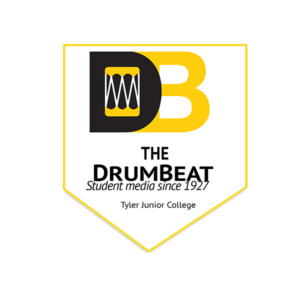
On April 8, a total solar eclipse is set to occur. According to Texas Parks and Wildlife, the eclipse will pass through Tyler.
“So total solar eclipses, in one sense they are rare. In another sense, they happen on a fairly regular basis. So in general, or on average, total solar eclipses will happen about every 18 months or so,” Dr. Beaux Hartwig, the director of the TJC Earth and Space Science Center, said. “But what makes them rare is where you have to be to see them. The last time a total solar eclipse passed through Tyler and East Texas, was 1878, and then the next time that a total solar eclipse will pass through Tyler, and the East Texas region won’t happen again until the year 2343—so another 319 years. So for Tyler and East Texas, this is really kind of a once-in-a-multi-lifetime event.”
According to tjc.edu, the Earth and Space Science Center will be showing two shows to help prepare for the solar eclipse. In addition to the shows, the science center will be giving out free solar eclipse glasses to wear on April 8.
The last eclipse to happen was in October, but it was not at 100% totality. That eclipse was partial and was at 80% totality. Hartwig recommends finding a point in Tyler to watch the eclipse from that would show 100% totality because “99% partial eclipse is a 0% total eclipse.” Hartwig doesn’t mention a specific place to watch the solar eclipse from but says to see it in the path of totality. He mentions the path of totality being anywhere from Fort Worth, which is the western edge, and Tyler, which is the eastern edge.
“Now the further kind of north and west from Tyler you go, you’re going to have a longer moment of totality. Here at TJC, we’re going to have about a minute and a half. But if you’re in places like Van or Kaufman or Terrell, they’re going to get close to four minutes of totality,” Hartwig said.
According to tjc.edu/news, the whole eclipse will last from 12:24 p.m. to 3:04 p.m. However, this isn’t the time frame for totality, which is from 1:43 p.m. to 1:45 p.m.
“Now, in that moment of totality, there’s going to be a lot of things happening. So the sky is going to be getting darker, it will turn a deep, kind of dark purplish color, you’ll be able to see stars and planets in the middle of the day. We’re hoping you’ll be able to see Jupiter and Venus pretty easily; you might be able to see Saturn. And there’s even talk that there could be a comet that’s visible near Jupiter that time; comets are kind of tricky,” Hartwig said. “Now, what you can also see as the moon is starting to completely block out the sun, you’re going to see a phenomenon called the diamond ring, that’s that last little peak of sunlight, and it’s just going to kind of light up, the corner of the moon is going to look truly beautiful. And then once the moon completely blocks out the sun and you’re in this moment of totality, you’ll be able to see what’s known as the sun’s corona. That’s kind of the outer atmosphere of the sun. It’s kind of these white wisps that you may see in pictures about the eclipse that’s called the corona and that is truly out of this world. Pictures and photos do not do it justice; it’s something that you really have to see for yourself to understand.”
Hartwig recommends preparing for the solar eclipse by picking up solar eclipse glasses. Students can pick up a pair of glasses by bringing their student ID to the science center. Additionally, Hartwig suggests preparing for the temperature drop. According to Hartwig, the temperature will drop by six to 10 degrees.
Moreover, the TJC Earth and Space Science Center has many events scheduled for the solar eclipse. One thing the science center has planned is an eclipse exhibit. According to Hartwig, it has information about how eclipses work. In addition to the exhibit, Hartwig mentions a planetarium show called “Eclipse.” The show goes over the history of solar eclipses, how they work and how to view them safely.
To prepare for the eclipse, the science center hosted an “Eclipse week” from April 2 to April 6. During this week, the science center invited NASA Astrophysicist, Dr. Hakeem Oluseyi to speak at a luncheon.
“On the eclipse day, April 8, we are going to have several events for people to view the eclipse. So here, outside of the science center, we’re going to have telescopes that are set up, as well as we’ll be passing out glasses. We also have a solar viewing tent in the case that you don’t have glasses,” Hartwig said. There’s still a way for you to view the eclipse. We’ve also partnered with Spring Fling that will be happening at the same time. It’s going to be kind of a Spring Fling celestial celebration if you will. And so there are going to be kind of different ways for the TJC community to come out and celebrate and view this event.”
For more information on the solar eclipse, visit tjc.edu/eclipse.



